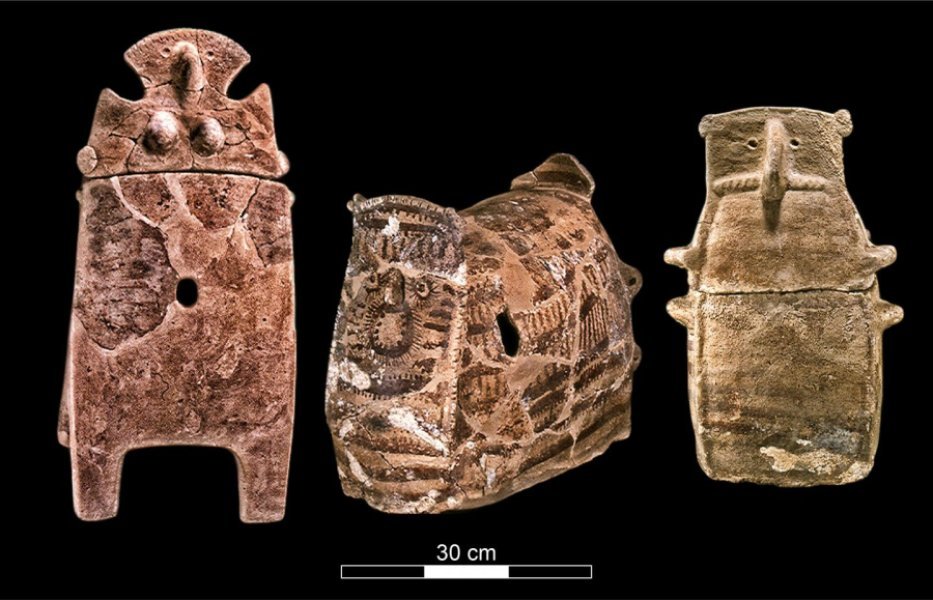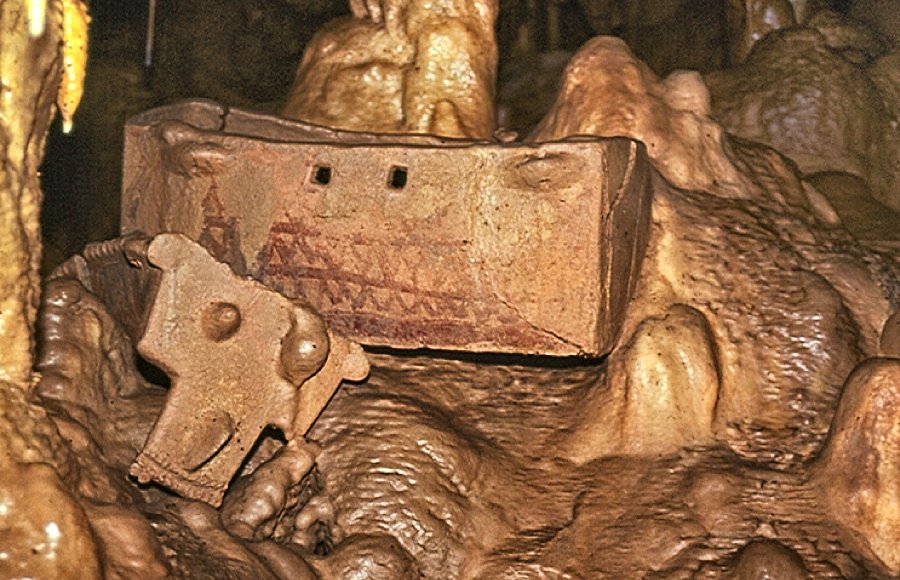AncientPages.com - A new DNA research conducted by researchers from Tel Aviv University, the Israel Antiquities Authority and Harvard University, sheds light on migration waves from Anatolia and the Zagros mountains (today's Turkey and Iran) to the Levant.
The results are important because this movement of people contributed to development of the Chalcolithic culture that existed in Israel's Upper Galilee region about 6,500 – 7,000 years ago.

Ossuaries from the Chalcolithic Period, excavated at Peqi'in Cave. Credit: Mariana Salzberger, courtesy of the Israel Antiquities Authority
In 1995, Zvi Gal, Dina Shalem and Howard Smithline of the Israel Antiquities Authority began excavating the Peqi'in Cave in northern Israel, which dates to the Chalcolithic Period in the Levant. The team unearthed dozens of burials in the natural stalactite cave that is 17 meters long and 5-8 meters wide.
The large number of unique ceramic ossuaries and the variety of burial offerings discovered in the cave suggest that it was once used as a mortuary center by the local Chalcolithic people.
"The uniqueness of the cave is evident in the number of people buried in it — more than 600 — and the variety of ossuaries and jars and the outstanding motifs on them, including geometric and anthropomorphic designs," Dr. Dina Shalem of the Institute for Galilean Archaeology at Kinneret College and the Israel Antiquities Authority, said.
"Some of the findings in the cave are typical to the region, but others suggest cultural exchange with remote regions.
The unique culture of the Chalcolithic people has long been debated but now researchers known that the cultural change that took place in the region was caused by migration.

Decorated ossuary in Peki'in cave Photo: Mariana Salzberger, courtesy of the Israel Antiquities Authority)
As many as 22 of the skeletons excavated at Peqi'in Cave and dated to the Chalcolithic Period were analyzed.
"This study of 22 individuals is one of the largest ancient DNA studies carried out from a single archaeological site, and by far the largest ever reported in the Near East," Dr. May says.
"The genetic analysis provided an answer to the central question we set out to address," said Prof. David Reich of Harvard University adding that it showed that the Peqi'in people had substantial ancestry from northerners - similar to those living in Iran and Turkey - that was not present in earlier Levantine farmers."
"Certain characteristics, such as genetic mutations contributing to blue eye color, were not seen in the DNA test results of earlier Levantine human remains," said Dr. Hila May at Tel Aviv University’s Sackler Faculty of Medicine. "The chances for the success of such a study seemed slim, since most of the ancient DNA studies carried out in Israel have failed due to difficult climatic conditions in the region that destroy DNA."
"Fortunately, however, human DNA was preserved in the bones of the buried people in Peqi'in cave, likely due to the cool conditions within the cave and the limestone crust that covered the bones and preserved the DNA," said Prof. Hershkovitz.
It was published today in Nature Communications.
AncientPages.com





